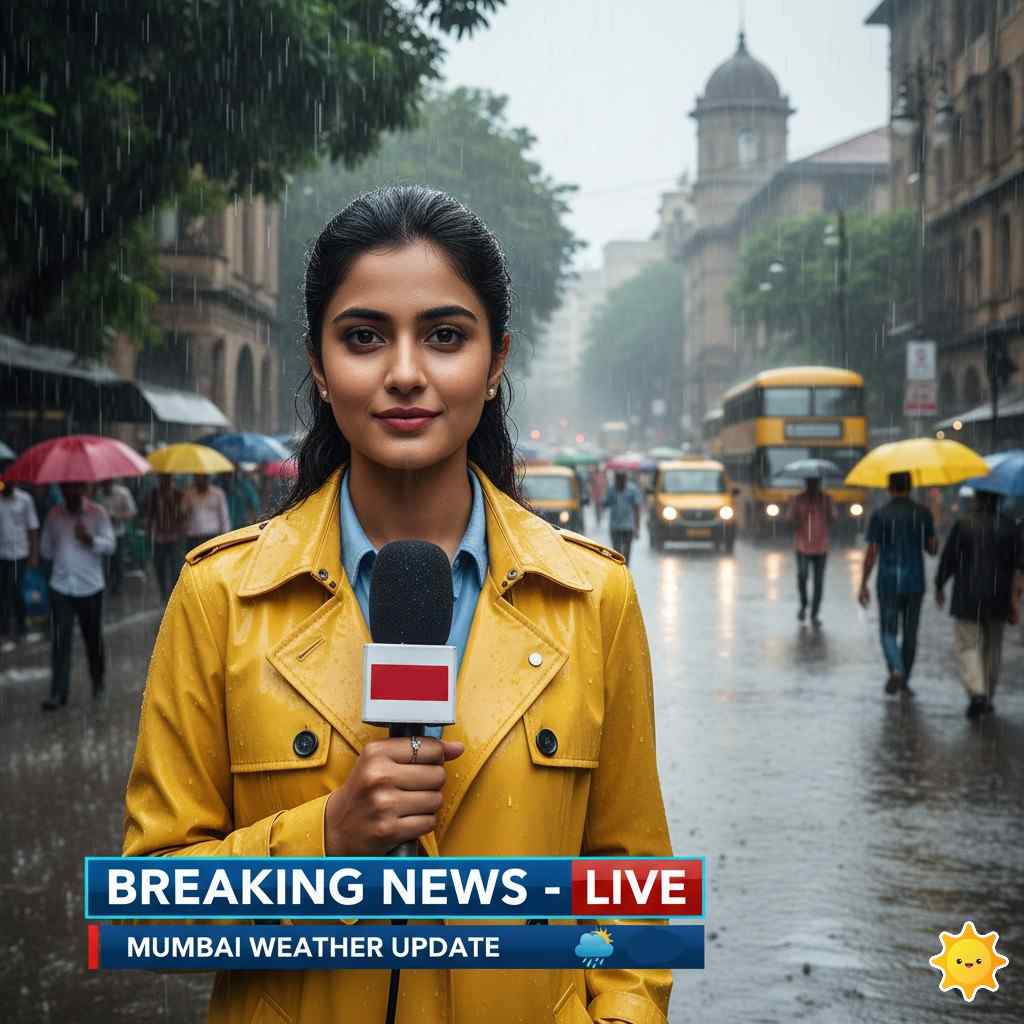
The city of Mumbai is once again facing the brunt of extreme monsoon showers as the India Meteorological Department (IMD) has issued a red alert for heavy rainfall across several parts of the metropolitan region. According to the IMD forecast, intense downpours are likely to continue for the next 48 hours, creating concerns of waterlogging, traffic jams, and disruptions in daily life. The alert has brought the city administration on high alert, with emergency services and disaster response teams on standby.
Table of Contents
What the IMD Red Alert Means for Mumbai
A red alert by IMD signifies the possibility of extremely heavy rainfall, exceeding 204 mm in 24 hours. Such conditions often result in localized flooding, waterlogging in low-lying areas, tree falls, and risks of landslides in hilly zones near Mumbai. Citizens are advised to stay updated with official weather bulletins and take necessary precautions.
Government Guidelines for People in Mumbai
In view of the Mumbai weather red alert, the Brihanmumbai Municipal Corporation (BMC) and state authorities have issued important safety guidelines for residents:
- Avoid unnecessary travel during peak rainfall hours to reduce the risk of being stranded.
- Stay indoors as much as possible, especially in flood-prone areas.
- Keep emergency kits ready, including drinking water, essential medicines, torch, batteries, and dry food items.
- Do not step into waterlogged zones, as they may hide open manholes or live electric wires.
- Follow official social media handles of BMC and IMD for verified updates.
- Schools and colleges in some districts may remain shut based on rainfall intensity; parents should check official notices.
The disaster management cell has also shared helpline numbers for immediate assistance in case of emergencies.
Regions in Mumbai Facing Heavy Rainfall
According to the latest updates, the following regions in Mumbai are witnessing the heaviest spells of rain:
- South Mumbai: Areas like Colaba, Marine Drive, Byculla, and Worli have recorded intense showers.
- Central Suburbs: Kurla, Ghatkopar, Chembur, and Sion are experiencing severe waterlogging.
- Western Suburbs: Andheri, Borivali, Kandivali, and Malad are seeing flooding in low-lying areas.
- Eastern Suburbs: Bhandup, Mulund, and Vikhroli are reporting heavy rainfall with traffic diversions.
- Thane and Navi Mumbai: Heavy rainfall has also affected these adjoining regions, with alerts for flooding in riverside areas.
How to Stay Healthy During Heavy Rainfall in Mumbai
The monsoon season not only brings waterlogging and traffic chaos but also raises health risks. Here are some health tips to stay safe during heavy rainfall in Mumbai:
- Drink only clean, boiled, or filtered water to avoid waterborne diseases like cholera, typhoid, and diarrhea.
- Avoid street food during rainy days, as contaminated food can cause stomach infections.
- Wear raincoats or carry umbrellas to prevent catching viral fever or cold.
- Keep mosquito repellents handy as stagnant water can become a breeding ground for dengue and malaria.
- Maintain hand hygiene by washing hands frequently with soap or using sanitizers.
- Consult a doctor immediately if you experience fever, chills, or stomach-related issues.
Travel Guidelines for Mumbai Commuters
The Mumbai monsoon often disrupts the city’s lifeline – its public transport system. With the red alert in Mumbai weather, the following travel guidelines have been issued:
For Local Train Commuters
- Check railway announcements before leaving home, as heavy rainfall may cause delays or cancellations.
- Western, Central, and Harbour line services may be affected by waterlogging on tracks.
- Carry extra drinking water and dry snacks in case of long delays.
- Avoid standing near train doors when the train is overcrowded during rains.
For Bus Travelers
- BEST buses may face route diversions due to waterlogging.
- Passengers should check the BEST app or official updates for route changes.
- Avoid boarding overcrowded buses to reduce the risk of accidents.
For Two-Wheeler Riders
- Avoid riding two-wheelers during heavy downpours due to slippery roads.
- If travel is unavoidable, wear proper rain gear and drive slowly.
- Stay away from flooded underpasses and subways.
For Car Users
- Keep fuel tanks filled in advance.
- Drive cautiously, maintain safe distance, and avoid flooded roads.
- Keep an emergency toolkit and power bank inside the vehicle.
School and Office Updates
Many schools across Mumbai may declare holidays depending on the rainfall situation. Offices in low-lying zones may also ask employees to work from home if travel becomes unsafe. Companies are urged to adopt flexible working arrangements during extreme weather.
Flood-Prone Areas to Watch Out For
Mumbai is notorious for waterlogging in certain hotspots. Commuters should take extra caution while passing through:
- King’s Circle
- Dadar TT Circle
- Sion Circle
- Milan Subway (Santacruz)
- Andheri Subway
- Kurla Station Road
- Chembur Station Road
Safety Measures for Citizens
To stay safe during this extreme Mumbai weather situation:
- Avoid touching electric poles or wires.
- Do not attempt to drive or walk through fast-flowing water.
- Keep children indoors and ensure their safety.
- Stay connected with neighbors and community WhatsApp groups for local alerts.
Mumbai Airport and Flight Updates
Heavy rainfall has also caused delays at Chhatrapati Shivaji Maharaj International Airport. Passengers are advised to check flight status before leaving for the airport. Airlines are allowing free rescheduling for passengers affected by weather disruptions.
Expert Advice on Coping with Mumbai Monsoons
Weather experts suggest that Mumbai residents should treat this red alert seriously. Preparedness is the key to minimizing risks. Stocking up on essentials, staying informed through official sources, and avoiding unnecessary travel can help citizens stay safe.
Final Word
The Mumbai weather red alert is a reminder of the city’s vulnerability during monsoon season. With government agencies working round the clock and citizens cooperating by following safety guidelines, the city can tackle the challenges of heavy rainfall. People are urged to remain calm, take precautions, and stay indoors as much as possible until the situation improves.


